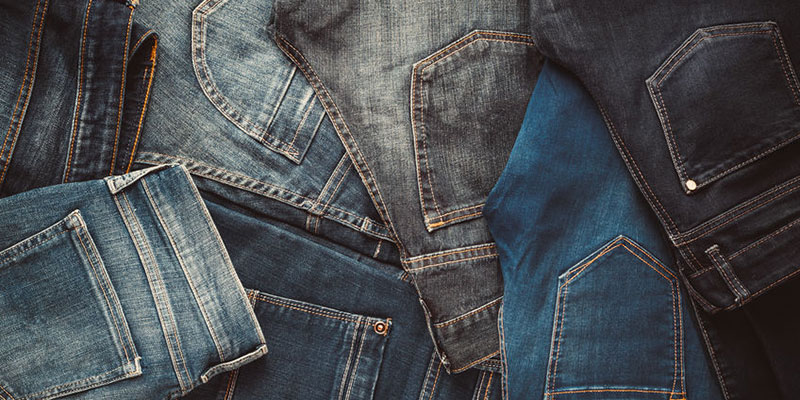Blue jean manufacturers have begun adopting new techniques that reportedly reduce the water used in dyeing by 71-99%.
From growing cotton to dyeing it to laundering finished products, producing blue jeans consumes a large amount of water
We may simply think of a worn pair of blue jeans as an old friend, but may not put a lot of thought into how those jeans were made. In fact, a great deal of water goes into growing cotton, washing it, and dyeing it blue. The lion’s share of the fashion sector’s worldwide water use is for cotton cultivation and wet textile processes like bleaching, dyeing, printing, and finishing, and global production of cotton is estimated to use 222 billion m³/y of water. It is also estimated that 20% of industrial water pollution is associated with garment manufacturing, and 85% of that is associated with an annual 1.3 trillion gallons for dyeing processes.
The fashion industry, however, is becoming progressively more conscious of sustainability. Here are some examples:
- Everlane manufactures its jeans in the clean-energy Saitex factory, which reuses 98% of water. With a global average at 1,500 L for a pair of blue jeans, Everlane’s 0.4 L figure is remarkable. Outerknown S.E.A. jeans are also made at Saitex with 100% organic cotton.
- Taylor Stitch also uses organic cotton to produce its ’68 Denim with water, energy, and chemically efficient processes.
- Levi Strauss Company is stepping up with a laser dyeing method, which is touted to reduce water consumption in dyeing by 71%.
- Wrangler also rolled out a new Dry Indigo® denim. The foam process eliminates 99% of the water used to dye denim. The process was developed at Texas Tech, with early-stage funding from Wrangler and the Walmart Foundation, with Spanish company Tejidos Royo milling and shipping the jeans.
- Levi’s Better Cotton Initiative has been training farmers to be more water efficient since 2001, and its “Water < Less” processes have reused upwards of 2 billion L of water and have included the use of 15% recycled cotton or more in Levi’s jeans. Levis hopes to sustainably source 100% of its cotton and is recycling old jeans as insulation with partner Cotton’s Blue Jeans Go Green. Levi’s also has compiled perhaps the most comprehensive estimate of water used throughout the life cycle of a pair of blue jeans. From farming to final disposal, one pair of 501® jeans requires 3,781 L of water, including laundering.
Cotton Farming
While those advances are laudable, most water used for blue jeans is for cotton irrigation and is considered “virtual water” because it is often overlooked in water footprint calculations. Global textile production requires an estimated 44 trillion L of water yearly for irrigation, about 3% of all irrigation, 95% of which is for growing cotton. Cotton irrigation makes up 92% of the water footprint of a pair of jeans.
About half of local water impacts from cotton are from foreign demand. An estimated 20% of water loss from the disappeared Aral Sea was a result of EU cotton consumption, and the fashion sector accounts for 7% of local groundwater and drinking water depletion globally.
Most sources say it takes 10,000-20,000 L of water to produce 1 kg of cotton, but some cotton advocates claim that cotton water footprint estimates are inflated, pointing out that cotton can grow in very dry climates. The International Cotton Advisory Committee (ICAC) estimates a kilogram of ginned cotton only requires about 1,214 L to irrigate, and 41.3% of cotton production does not require irrigation.
Water Use in Denim Manufacturing
After cotton is removed from bales, it is carded (run through brushing machines), spun into yarn, and dyed, usually with a synthetic indigo. Large balls of cotton called “ball warps” are repeatedly dipped in a vat of dye, forming dye layers. The cotton yarn is “slashed,” or coated with a starchy sizing to stiffen it, then blue and white yarns are woven on shuttleless looms.
The production is water-intensive, but some jeans are also prewashed or stonewashed, creating compounds that must be disposed of, like chlorine, and organic pollutants like dye and starch. These shouldn’t be discharged untreated into surface water because resultant oxygen depletion would harm aquatic life.
Streams still run blue in many areas where denim is manufactured. Contact Fluence to learn more about our solutions to turn textile industry wastewater into top-quality effluent.

